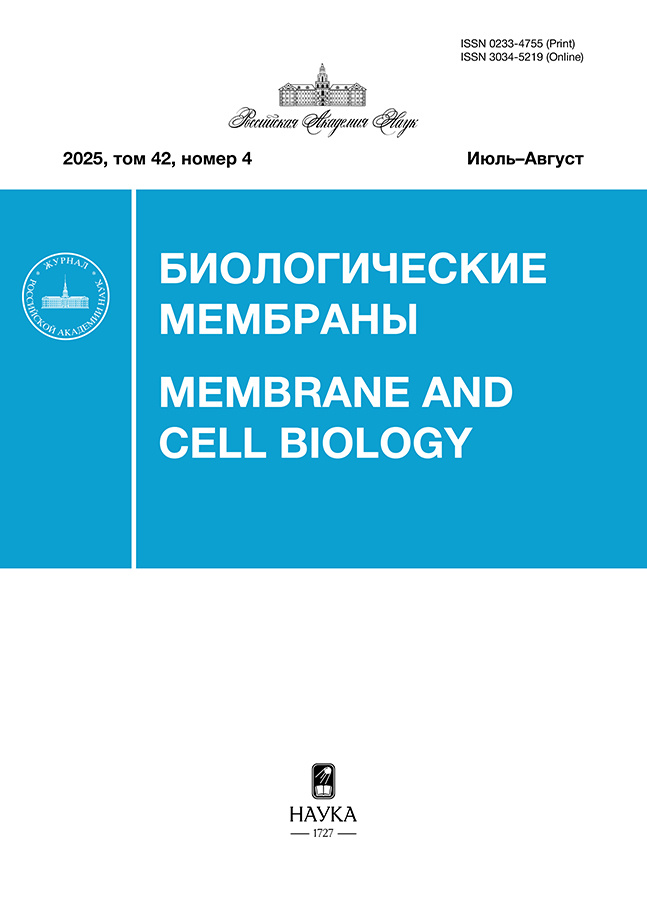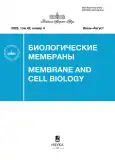Membrane and Cell Biology
ISSN (print): 0233-4755
Media registration certificate: ПИ № ФС 77 – 77276 от 05.12.2019
Founder: Russian Academy of Sciences (RAS)
Editor-in-Chief: Kolesnikov Stanislav Sergeevich
Number of issues per year: 6
Indexation: RISC, RISC Core, Higher Attestation Commission list, RSCI, White List (3d level), Scopus, Web of Science Core Collection (Science Citation Index Expanded (SCIE))
The journal publishes both original experimental and theoretical works and reviews that highlight the physicochemical aspects of membrane and cell biology: molecular mechanisms of membrane transport, receptor systems and intracellular signaling, cellular functions and pathologies associated with cell membranes, as well as fundamental biomedical research, including those devoted to membrane aspects of physiology, pharmacology, and immunology.
The journal was founded in 1984.
Current Issue
Vol 42, No 4 (2025)
ОБЗОРЫ
The potential for using the mechanism of hypoxic adaptation in lower eukaryotes
Abstract
 255-263
255-263


***
Dominance of intracellular maturation of brain-derived neurotrophic factor provides its retrograde influence in newly formed mouse motor synapses
Abstract
 264-276
264-276


Activation of pyruvate dehydrogenase complex and inhibition of Krebs cycle and mitochondrial respiration by excess pyruvate
Abstract
 277-288
277-288


The Effect of Extracellular Vesicles Produced by MMSC on the Growth Rate of Cultured Renal Epithelial Cells in Normal and Oxygen-Glucose Deprivation Conditions
Abstract
 289-300
289-300


Effect of the combination of TGFβ + MCSF + cholesterol on the percentage and functional activity of microglia in rat hippocampal cell cultures
Abstract
 301-314
301-314


Decompensated liver cirrhosis impairs the deformability of erythrocytes and their ability to pass through microchannels
Abstract
 315-331
315-331


Simultaneous Monitoring of Cytosolic and Reticular Ca2+ Indicates Heterogeneity of Ca2+ Store
Abstract
 332-344
332-344












